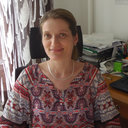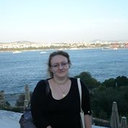TLC-direct bioautography for determination of antibacterial activity of Artemisia adamsii essential oil.
Paraules clau
Resum
The aim of the present study was the chemical characterization of the essential oil of a Mongolian medicinal plant, Artemisia adamsii Besser, and the investigation of the antibacterial effect of its oil on different human pathogenic bacteria (Staphylococcus aureus, methicillin-resistant S. aureus, and S. epidermidis). The chemical composition of the oil was established by GC and GC/MS. Direct bioautography was used for detecting the antibacterial activity of the essential oil. The result of GC experiments showed that a-thujone was the main component (64.4%) of the oil, while the amount of beta-thujone was 7.1%. 1,8-Cineole seemed to be the other relevant component (15.2%). The antibacterial activity of the A. adamsii essential oil against all three investigated bacteria was observed in the bioautographic system, but this effect was not proportional to the concentrations of a- or beta-thujone; therefore, from a microbiological aspect, thujone content does not determine the medicinal value of this oil. On the whole, the combination of TLC separation with biological detection is an appropriate method for evaluating multicomponent and hydrophobic plant extracts, for instance, essential oils, and it provides more reliable results than traditional microbiological methods (e.g., disc diffusion and agar plate techniques).




